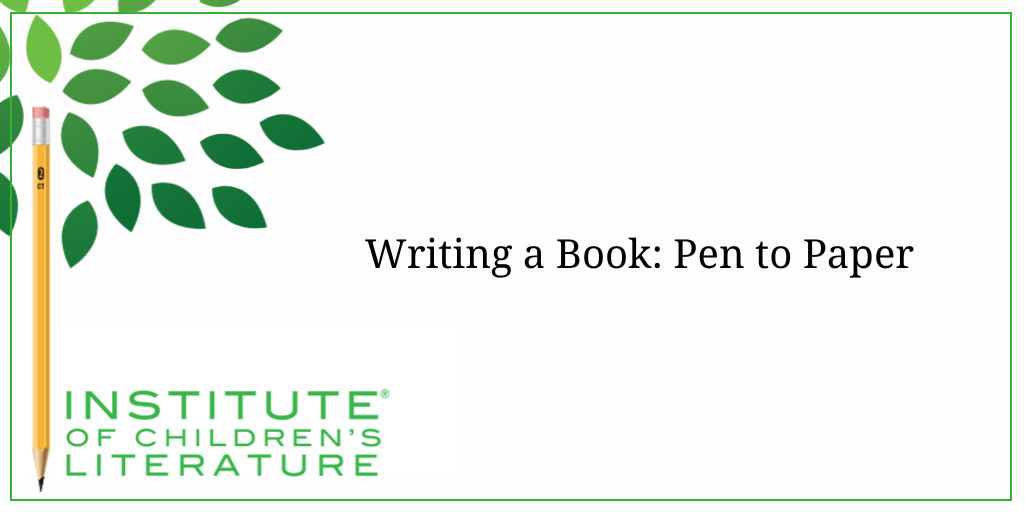
Your Voice or Theirs?
Voice, whether your natural writing voice or the voice of a character, comes from an emotional place. Jan Fields gives us exercises to develop these voices.

After prewriting comes the part of writing a book that most people imagine: putting the words on paper (or digital file). This part is fun and frustrating and hard and exciting. As I do a considerable amount of pre-writing (including outlines), the actual writing step is the second time I’ve told myself the story, but it is the time I immerse myself in the story and allow my imagination to spread out.
It is now that I find out that Angelo punched a school locker in a fit of temper. It is now that I hear the clang of the metal locker and the meaty thump of his hand. And because I have imagined this specific detail, it colors the rest of the argument as I watch Angelo rubbing his fingers and see how they’re swelling. During the writing time, everything turns real.
Through the years, I’ve come to recognize exactly how much writing I can do effectively each day. If I don’t write enough, the book gets done a little more slowly, and I run the risk of growing tired of the project, but I’m probably fine. If, however, I try to do too much, my enthusiasm for the effort begins to wane, and I start trying to get to the end and get it over with. That’s a bad sign. Good writing is immersive for the writer. But when you’re starting to get impatient, you lose that immersion. You write faster, you notice less, and you put more distance between the reader and the action because you’re favoring speed over intensity and intimacy.
That doesn’t mean that every moment of a book I write is filled with the kind of intense detail that makes you feel as if you are right there. After Angelo and Jen have their fight and I take Angelo out to his car, I might not bother writing about the graffiti written on the lockers between his now bent locker door and the exit to the parking lot. I might not notice that the bright morning has given way to a cloudy afternoon with the promise of a chilly rain. I might not notice the leaves in the parking lot. I might not hear a shout from Angelo’s friend, telling him not to forget something. I might decide that none of this is important to the story, so I might simply stomp across the lot, hop in his car, discover it won’t start, and make the unfortunate choice to pound the steering wheel.
In other words, I pay less attention on purpose in one spot to get us to the next important moment. But these kinds of choices are intentional and not driven by my own boredom and desire to go do something other than write.
If I have decided that good writers write two chapters a day, period, then I might begin to rush in the effort to meet the demands of being a “good writer” rather than finding what makes me the best writer I can be. I have come to know that trying to live by someone else’s writing productivity rules, even if they were rules that worked really well for the other person, is more likely to make things worse than better.
Knowing that I can only write with immersion and enthusiasm for a certain length of time doesn’t mean I can always work that way. I have deadlines to meet and money to make since writing is my living. As a result, I’ve learned sneaky tricks to work within my productivity peaks, and get things done. I’ve learned, for instance, that I can be productive more than once a day.
Sometimes I simply have to accomplish a number of writing activities in a day. In that case, I don’t simply knock them out one after another. If I tried that, I’d be working with a sliding scale of quality. Instead, I finish a project (or the portion of a project that I can do with enthusiasm and focus), and then I stop. I go for a walk or ride my stationary bike. Or I grab a cup of tea and watch television with my husband. Or I clean something. I find nothing gets my brain back to wanting to write better than tackling a few cleaning chores. It’s rare that my brain isn’t eager to get back to writing by the time I finish cleaning the bathroom or mopping the kitchen.

photo by cottonbro studio
These breaks help reset that writing energy so that I can go back to it. Now, I do know, for me, that each session in a day will get shorter. I’ll start rushing to be done sooner the second time than I did the first, and sooner still on the third time. So I have to work around this. It means I also need to make wise choices about deadlines, knowing realistically how much writing I can actually do in a day. But I’ve learned that writing breaks can be as important as writing discipline.
As a writer, I know scenes need to be balanced with action, description, and dialogue when those are logical parts of the scene. I don’t simply have voices speaking in the great empty room of a page. I have movement and props and circumstances that act on the scene to make it more than simply voices, but instead, make it people rooted in a moment.
I don’t always get this right the first time. Sometimes when you’re in the heat of writing the conversation and you’re excited about these characters and what they are saying, you can find the world drops away and you do focus on the voices.
And that’s fine.
Rough drafts are rough. It’s not unusual for me to go back through a rough draft to add tiny details that make the setting and situation more real. I sometimes throw in a surprise circumstance that requires I rewrite some of the dialogue, but makes everything more dynamic and believable. And that’s fine. It’s okay to follow the fire of your excitement during the writing process. In fact, it’s usually the best way to get the most from this part of the scene that has you so excited.
If I try to slow down and think more about the setting, I may miss some of the fire in the voices of the characters. So when I’m fired up, I follow that excitement and trust the process, knowing that I will need to go back and clean up all the other things I didn’t work on there. I accept that there will still be work to do, but I enjoy the rush of focusing on what excites me in the writing during the rough draft.
Sometimes it can be tough to get started during your writing time. Many writers find writing exercises helpful. Writing exercises can be as simple as picking one of your characters and trying to describe something in your room in his voice, or taking one of your settings and writing a paragraph about the sounds you’d hear there or the smells. I like writing exercises that are connected with my project somehow as they sometimes produce things I use at some point. And sometimes they don’t. That’s okay too, as long as they get me writing so that I can slide into the story and get going.
Sometimes when my project is nonfiction, I’ll do exercises where I brainstorm analogies like “Mantis shrimp are like house cats because they are both lovely and surprisingly deadly.” Or I’ll come up with a metaphor like “the buzzing of bees is the soundtrack of summer.” Sometimes I’ll make up a joke or funny line about the subject: “The wheels on the bus go thump, thump, thump. It must be pothole season in New England.”
By going outside what we might think of as normal ways to approach nonfiction, I can get warmed up and ready to jump back into a project. It can help the brain look at the subject from a variety of angles, and sometimes give you an interesting opening line or cool title that you didn’t expect. And that’s one thing I find true of writing every time I jump into it: there’s always something to find there that I didn’t expect. That’s what keeps me going back and makes the words-on-the-page part of the writing process so much fun, even when it’s hard.
With over 100 books in publication, Jan Fields writes both chapter books for children and mystery novels for adults. She’s also known for a variety of experiences teaching writing, from one session SCBWI events to lengthier Highlights Foundation workshops to these blog posts for the Institute of Children’s Literature. As a former ICL instructor, Jan enjoys equipping writers for success in whatever way she can.

Voice, whether your natural writing voice or the voice of a character, comes from an emotional place. Jan Fields gives us exercises to develop these voices.

Voice is something publishers want, but it’s an elusive thing to understand. Today, we discover ways to develop our own voice and the voices of our characters.

When writing conflict, inner and outer conflicts are not two separate things. Outer conflicts offer an opportunity to explore inner ones better. Find out how.
1000 N. West Street #1200, Wilmington, DE 19801
© 2024 Direct Learning Systems, Inc. All rights reserved.
1000 N. West Street #1200, Wilmington, DE 19801
© 2024 Direct Learning Systems, Inc. All rights reserved.
1000 N. West Street #1200, Wilmington, DE 19801
© 2024 Direct Learning Systems, Inc. All rights reserved.